 Due in Australia November 2021, the Polestar 2 is an urban-chic high-rise sedan that takes the electric car off in a development direction all of its own.
Due in Australia November 2021, the Polestar 2 is an urban-chic high-rise sedan that takes the electric car off in a development direction all of its own.
Polestar’s chief designer, Maximilian Missoni defines the significance of the new Tesla Model 3 rival in a really insightful way.
“This car was originally designed as a Volvo concept car,” he said, referring to the 2’s relationship with the 2016 Concept 40.2, which was intended to test the water for a Volvo compact saloon.
“But when we saw it on the stand, there was this moment. We realised that the car was different from the rest of the Volvo family.”
Missoni went on to explain that his team hadn’t designed a Volvo at all but, quite inadvertently, a Polestar instead.
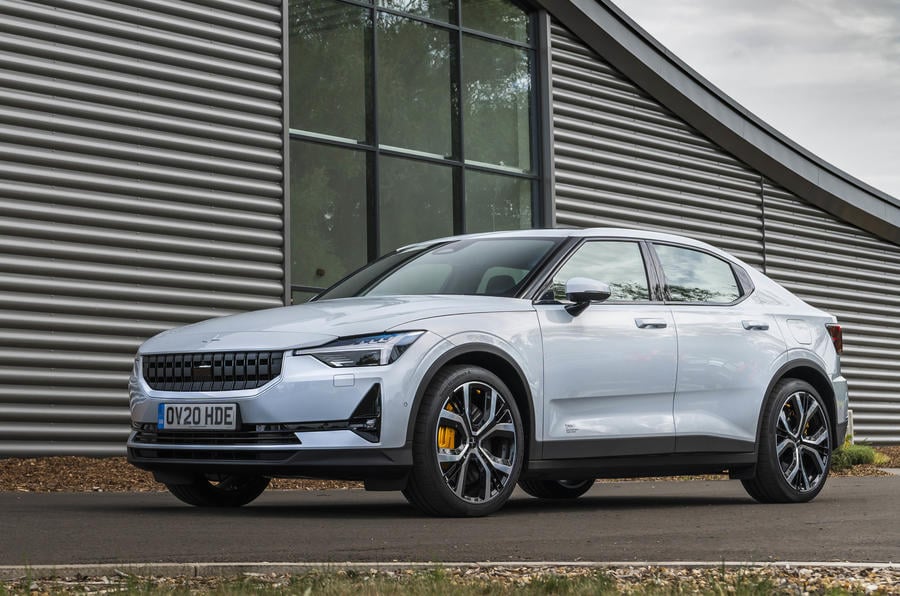
We might usefully think of this not as the second fully fledged Polestar model, then, but the first true Polestar. The 2 is a compact saloon with a hatchback rear that’s sized and priced like the Model 3. Needless to say, Polestar hopes it will tempt people out of Audis, BMWs, Mercedes and higher-end Volkswagens.
The car’s tallish, chunkily geometric proportions certainly make it look like something entirely fresh – different from a Tesla, a Volvo, a Mercedes or anything else for that matter. It’s ‘urban’ and ‘robotic’, described Missoni. Its glasshouse is quite visor-like, its volumes unusually straight and square. Precisely the thing you would come up with if designing a car in opposition to a curvy, slim-featured Tesla. Strangely enough, though, Missoni says that’s not how it was conceived at all.

The interior is equally modern, slick in its layout and quite neatly and sparsely provisioned. This is the ‘vegan interior’ that grabbed so many headlines at unveiling time last year. It allegedly uses significantly less plastic than most car interiors, more of the recycled stuff, and less harsh, environmentally nasty chemicals that component manufacturers can rely on are associated with the production of its various mouldings and ingredients.
Those major mouldings and surfaces look and feel unusual but not cheap or unpleasant. Some are harder than others and a few are just coarse or flimsy enough to begin to raise an eyebrow. By and large, though, the 2’s standard of perceived quality is good.
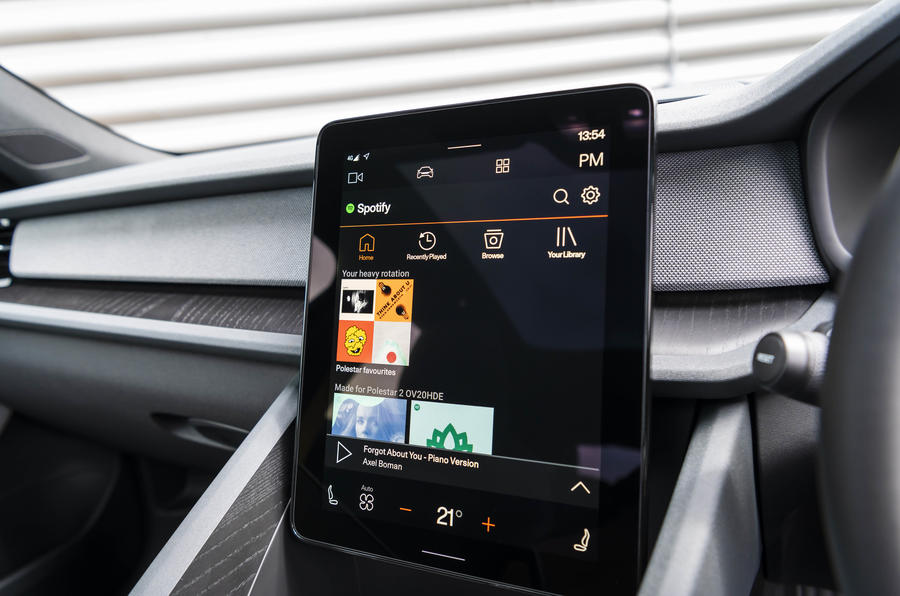
The driving position is different, too. You sit quite high, but the beltline is high and enveloping also, so you’re not instantly aware of the raised hip point. The cabin isn’t hugely spacious, but four adults of average height will likely fit comfortably enough.
Up front, you’re met with a simplified digital instrument cluster and a portrait-oriented, tablet-like touchscreen infotainment system that apes Tesla’s in its philosophy but which is designed to integrate fully with an Android smartphone and to mimic one for usability. It works very well, and Apple CarPlay functionality is due to be added next year.
Under that striking body, the 2 has an all-steel chassis with an electric motor at each axle and therefore four driven wheels. A 78kWh lithium ion battery pack is carried along the transmission tunnel and under the seats. Interestingly, the 2 is a good 200kg heavier than an equivalent 75kWh Model 3. That weight, Polestar claims, comes from it having made the chassis sufficiently rigid to meet the firm’s dynamic ambitions and sufficiently crash-safe to represent its Volvo roots in the right way. A veiled dig, that, but one unlikely to be lost on anyone who has read so many stories about the rather mixed crash performance of certain other EVs.
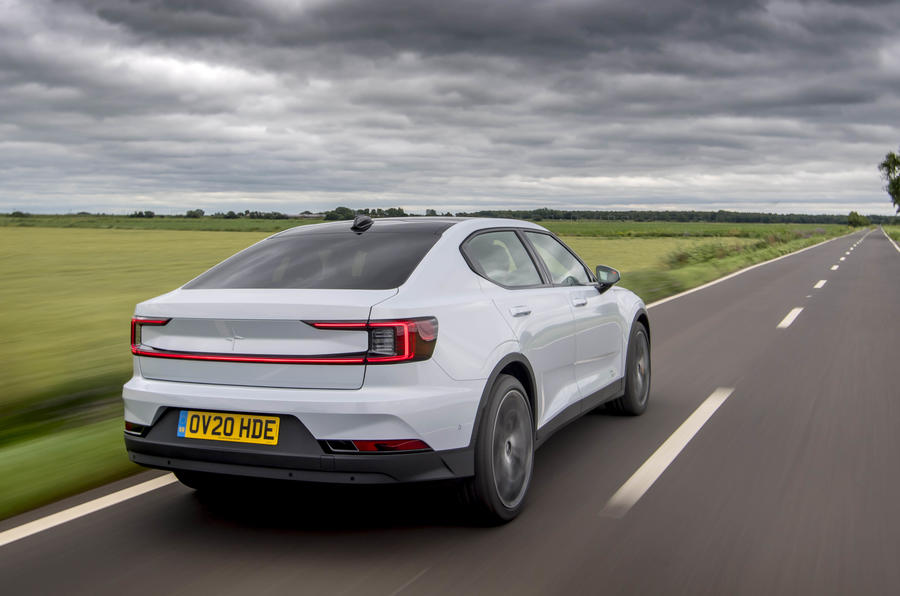
The 2’s suspension consists of struts up front and a multi-link axle at the rear. Here, the main bauble that owners will be offered is the £5,000 (AUD$9000) Performance package, which augments the mechanical specification with lowered steel coil springs and manually adjustable Öhlins monotube dampers, as well as with 20-inch forged alloy wheels, beefed-up Brembo brakes and gold seatbelts (they’re nice, actually).
Our test car had this package and, in factory tune, was surprisingly firm-riding. Although more comfortable over long-wave bumps, it had the bristling, slightly tetchy close body control of a competition special over sharper and more sudden inputs.
Apparently, Polestar chose a standard ride tune for the optional Öhlins set-up that would allow buyers to feel where their $9000 had gone. That tune, in my book, doesn’t suit an otherwise rapid but effortless EV well. If it were mine, I would certainly be keen to find the manual damper adjustment knobs (which are on the bottom of the inverted front struts, if you’re interested, as well as hidden behind panels up inside the rear wheelarches).
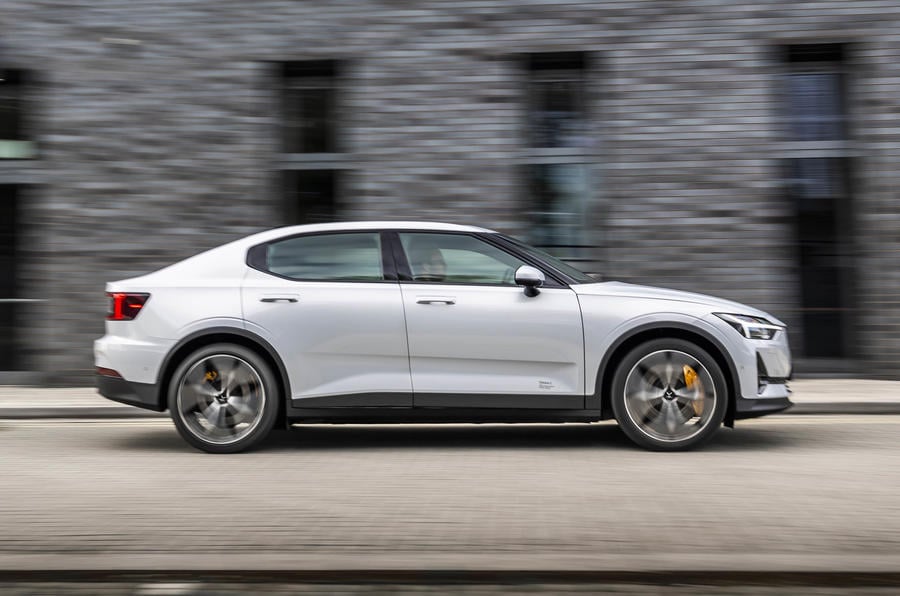
Even allowing for the over-damped low-speed ride, though, there’s an honesty, simplicity and no-nonsense directness about the 2 that you can easily warm to. It doesn’t make mock engine noises. It doesn’t have driving modes. It doesn’t even have a starter button: you just get in, put your foot on the brake pedal, nudge the gear selector into D and set off.
You can choose whether you want lots of ‘one-pedal-driving’ battery regeneration, just a little or none at all. Also whether or not you want the car to creep forward when you lift off the brake at a standstill and how heavy you want the steering to be.
Whether you go for heavy or light, the rim feels a bit gluey and over-assisted, with little genuine tactile feel. Even so, the rack is well-paced, and it commands a car that handles with loads of grip and surprisingly taut lateral body control when you start to press on a little bit.
You expect the 2 to roll when cornering, because of its weight and its profile, but no. It’s really taut and super-secure, taking a cornering line quickly and easily and sticking to it with real tenacity. You can pour on torque mid-corner without running short of adhesion, without rousing the traction control and without pushing either axle wide. And you can carry big speeds should you want to, encouraged by a simple, incorruptible kind of handling precision that you may not expect to find in any car as heavy as this one.
The walloping, instant roll-on acceleration of the 2 is, thanks largely to Tesla, probably something EV buyers will expect to find, and there’s plenty of that. Likewise the strangely textureless quality of its performance that, seamless and potent as it is, makes it perhaps more likely to momentarily amuse you now and again than to keep you coming back time after time.
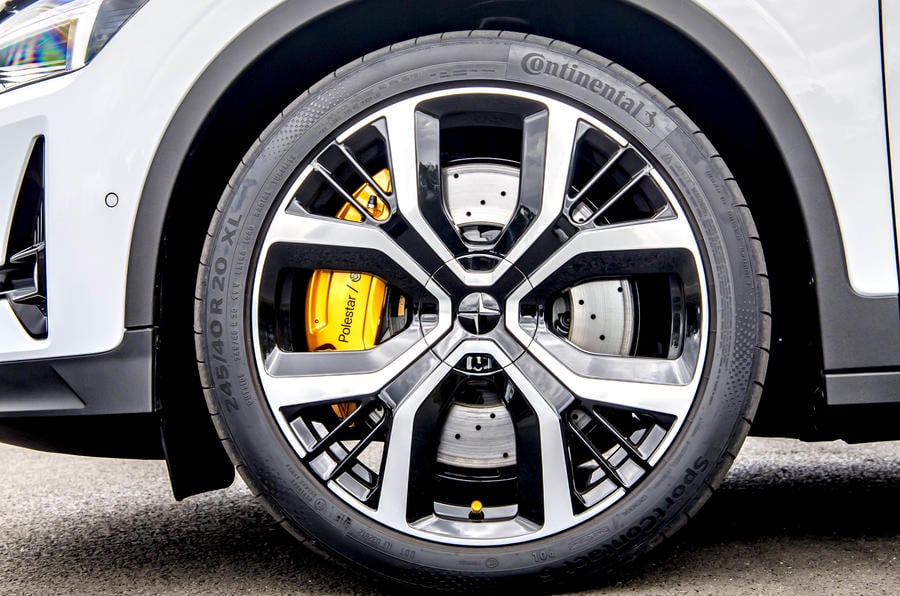
The 2 is certainly usable enough. Circa-500 kilometres of official range might prove to be more like 320 kilometres if our testing was any indication, depending on the particular specification of your car. That’s not an outstanding showing for an EV at this price level, granted, but it’s more or less what the Jaguar I-Pace returns and would suffice for a great many.
If you do, want one though, it may be because you like a bit of challenge – an enigma, even. Is this a driver’s car, you’ll ask yourself? Is it even the electric car, the down-the-line Tesla rival, or the 21st-century son-of-Volvo you expected to find? Quite plainly it is, and yet it isn’t.
The 2 is one of those cars that still evades definition 24 hours after your first drive in it, I can assure you, and that’s likely continue to for some time afterwards. That may even be its most refreshing and likable quality.
Polestar 2 price and spec
Price Circa AUD$90,000 Australian on sale 2021-22 (estimated) Engine 2 x AC synchronous, permanent magnet electric motors Power 300kW Torque 660Nm Gearbox direct drive Kerb weight 2048kg Top speed 205km/h 0-100km/h 4.7sec Range 470km’s (with Performance Pack) Rivals Tesla Model 3, Audi E-tron
Matt Saunders




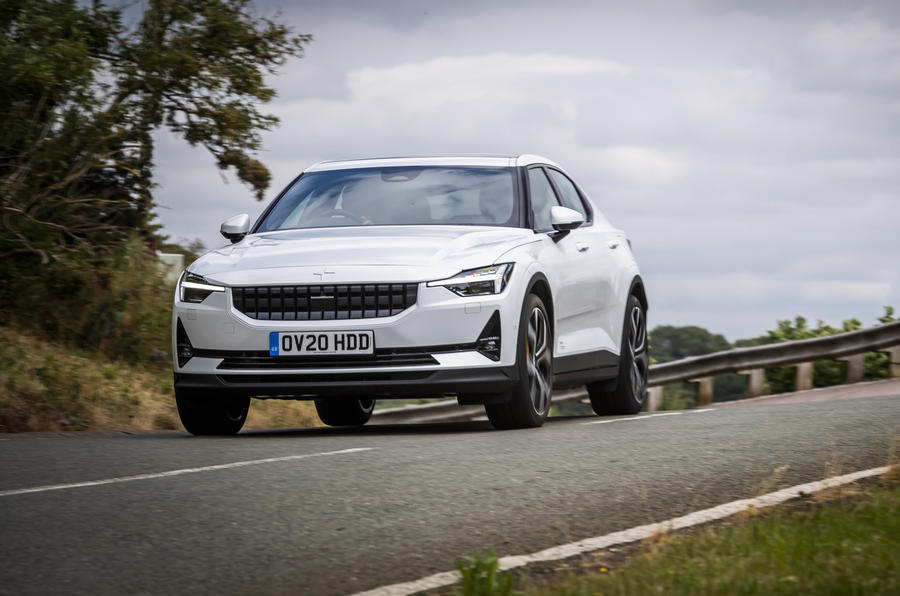 Due in Australia November 2021, the Polestar 2 is an urban-chic high-rise sedan that takes the electric car off in a development direction all of its own.
Due in Australia November 2021, the Polestar 2 is an urban-chic high-rise sedan that takes the electric car off in a development direction all of its own.